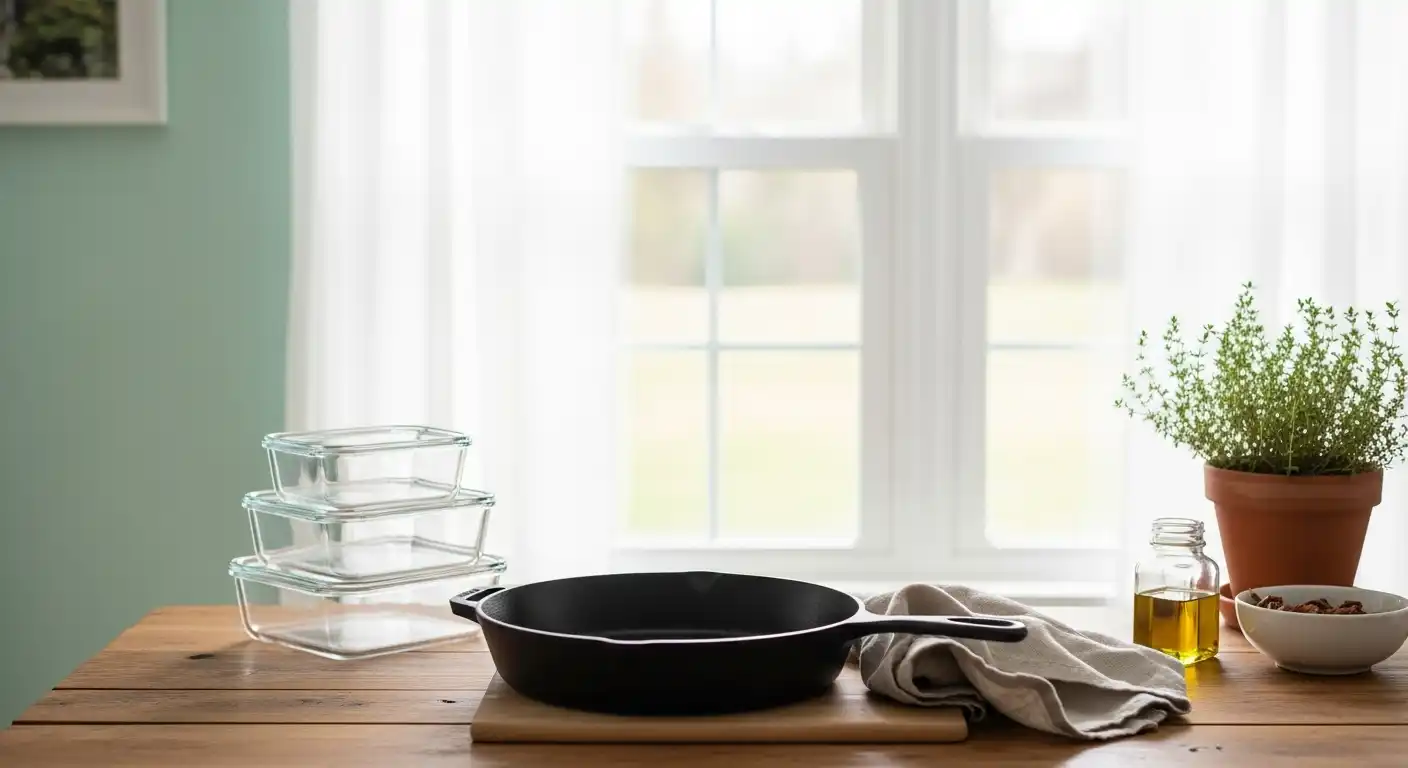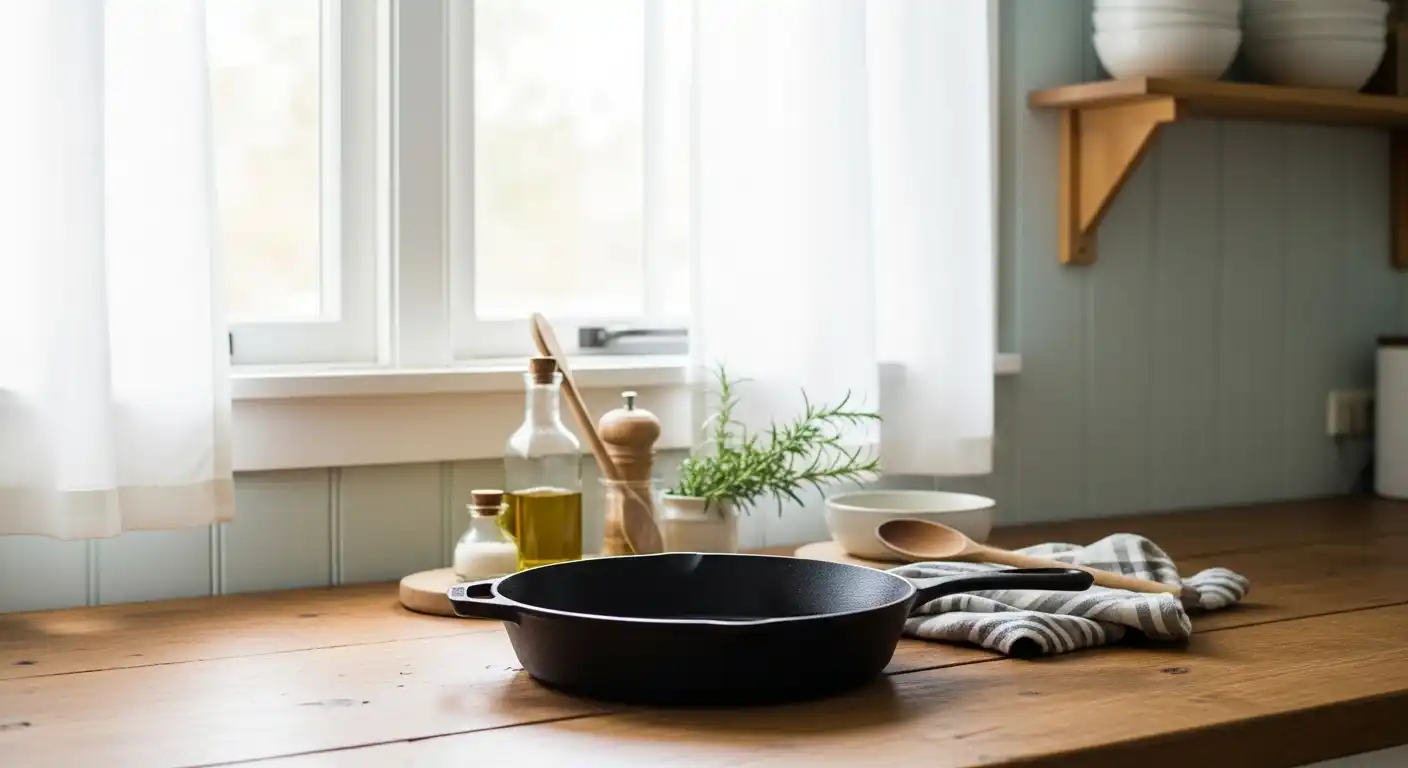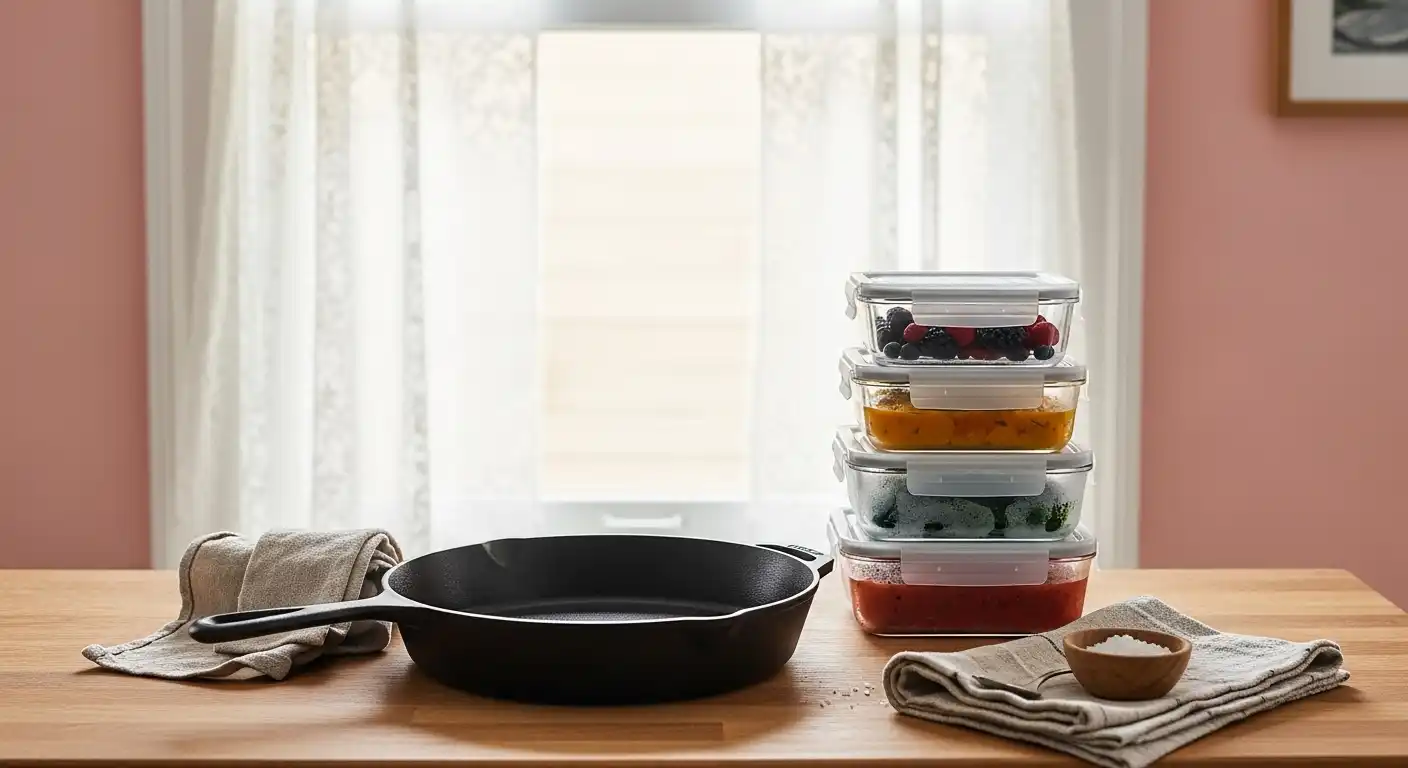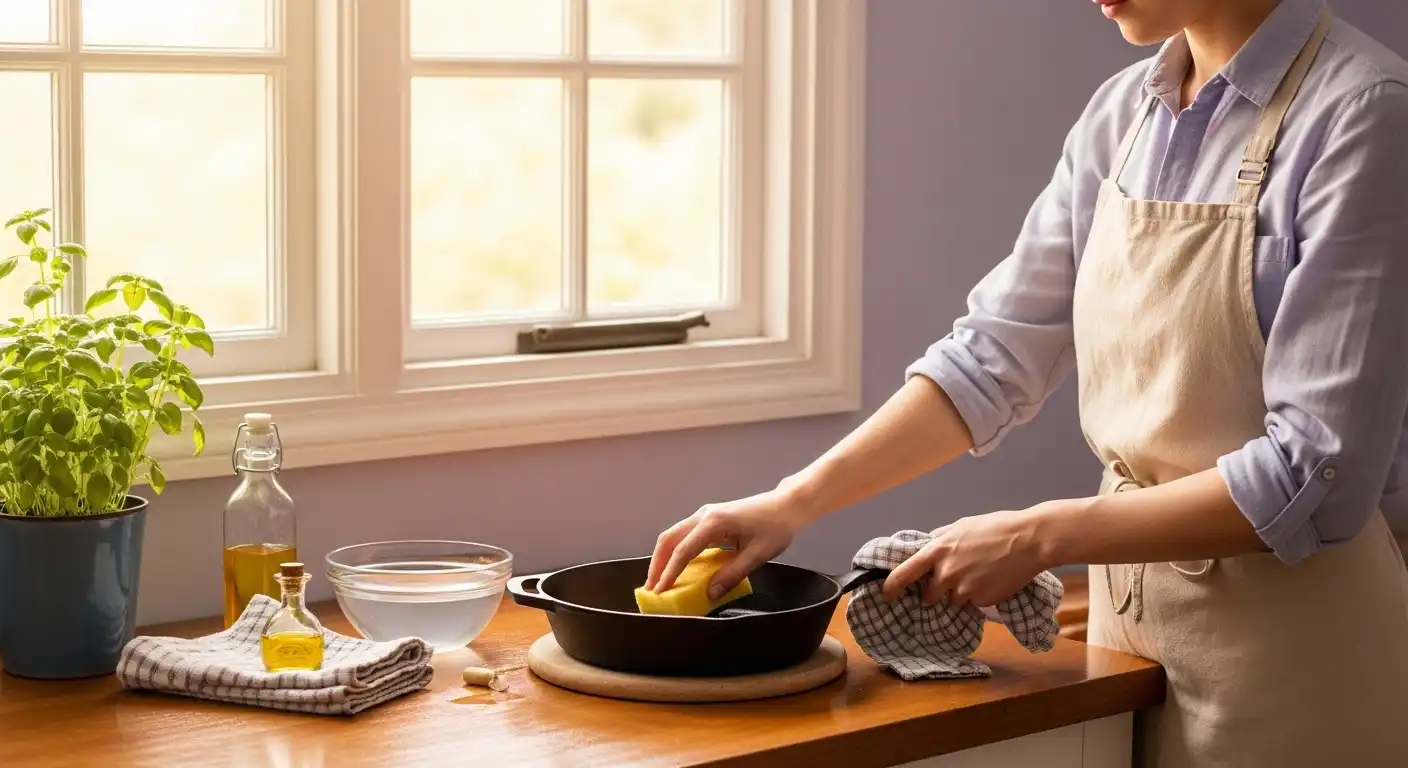Can You Freeze In Cast Iron Skillet? Exploring the Facts

Cast iron skillets are beloved for their durability, versatility, and ability to elevate home cooking.
But when it comes to storing food, questions often arise about what’s safe and practical.
One such question is: Can you freeze in a cast iron skillet?
Let’s dive into the details to understand whether this is a good idea and how to handle your cast iron cookware properly.
🎄 Christmas & Year-End Amazon Deals !
Don’t miss out on the best discounts and top-rated products available right now!
*As an Amazon Associate, I earn from qualifying purchases.
Understanding Cast Iron’s Unique Properties
Cast iron is a heavy-duty material known for its excellent heat retention and even cooking.

Whether you’re searing steaks or baking cornbread, a well-seasoned skillet is a kitchen workhorse.
But its porous nature and seasoning layer require careful handling to maintain performance.
Freezing involves exposing cookware to low temperatures, often below 0°F (-18°C), which can affect materials differently.
To determine if freezing in a cast iron skillet is feasible, we need to consider how cast iron reacts to cold, moisture, and prolonged food storage.
Can You Freeze In Cast Iron Skillet? The Short Answer
The short answer is: it’s not recommended to freeze food in a cast iron skillet.
While cast iron can technically withstand freezing temperatures, doing so can harm the skillet’s seasoning and increase the risk of rust.
Let’s break down why this is the case and explore safer alternatives.
Why Freezing in Cast Iron Is Risky

Cast iron skillets rely on a seasoned layer—a coating of polymerized oil—that creates a non-stick surface and protects against rust.
Freezing food in a cast iron skillet introduces challenges that can compromise this layer.
Moisture from food, especially as it freezes and thaws, can seep into the skillet’s porous surface.
This increases the risk of rust, particularly if the skillet isn’t thoroughly dried afterward. Rust can degrade the seasoning and affect the skillet’s performance.
Additionally, prolonged exposure to acidic foods, like tomato-based sauces, can strip the seasoning.
Freezing these foods in the skillet exacerbates this issue, as the extended contact time allows acids to break down the protective layer.
🎄 Christmas & Year-End Amazon Deals !
Don’t miss out on the best discounts and top-rated products available right now!
*As an Amazon Associate, I earn from qualifying purchases.
Finally, cast iron is prone to thermal shock. While freezing temperatures are less likely to cause cracking than rapid heating, extreme cold followed by quick warming could stress the material over time.
For more on maintaining your skillet’s seasoning, check out how to use a pre-seasoned cast iron skillet for the first time.
Storing Food in Cast Iron: Better Alternatives
If you’re wondering about storing food in cast iron, freezing isn’t the only concern.
Storing food in a cast iron skillet, even in the refrigerator, can lead to similar issues with moisture and acidity.
For short-term storage, consider transferring food to airtight containers made of glass or plastic.
For freezing, use freezer-safe containers or bags designed to prevent freezer burn and protect your food.
These materials are non-reactive and won’t be damaged by cold temperatures.
If you’re curious about refrigerating food in cast iron, read more in Can You Put Cast Iron in the Fridge?.
When Can You Use Cast Iron for Cold Storage?
In some cases, you might be tempted to use your cast iron skillet for cold storage, such as chilling a dessert or prepping a dish in advance.
For short-term chilling (a few hours in the fridge), a well-seasoned skillet might handle it, provided the food isn’t highly acidic or wet.
However, for freezing, it’s best to avoid cast iron altogether. Instead, consider using your skillet for cooking and then transferring food to a more suitable container.
This preserves the skillet’s seasoning and ensures your food stays safe.
🎄 Christmas & Year-End Amazon Deals !
Don’t miss out on the best discounts and top-rated products available right now!
*As an Amazon Associate, I earn from qualifying purchases.
For tips on safely storing food with cast iron, see How to Store Food in Cast Iron Cookware.
Caring for Your Cast Iron Skillet After Use

Proper care is essential to keep your cast iron skillet in top shape. After cooking, clean the skillet promptly to prevent food residue from sitting too long.
Use warm water, a soft sponge, and minimal soap (if needed) to clean without stripping the seasoning.
Dry the skillet thoroughly with a towel or by heating it on low to evaporate moisture.
Apply a thin layer of oil to maintain the seasoning. This routine prevents rust and ensures your skillet remains ready for its next use.
If you’re using a cast iron wok, the cleaning process is similar. Learn more in How to Clean a Cast Iron Wok.
Alternatives to Cast Iron for Freezing
If you need cookware that can go from stovetop to freezer, consider materials like stainless steel or enameled cast iron.
Enameled cast iron, such as a Dutch oven, is non-reactive and better suited for storing acidic foods.
However, even enameled cast iron isn’t ideal for freezing due to potential cracking from thermal shock.
For a comparison of cookware options, check out Cast Iron Dutch Oven vs. Stainless Steel Pot.
If you’re looking for non-cast iron options, explore What Can You Use Instead of a Cast Iron Skillet?.
Common Myths About Cast Iron and Freezing
There are myths about cast iron’s durability that lead some to believe it can handle anything, including freezing. While cast iron is tough, it’s not invincible.
🎄 Christmas & Year-End Amazon Deals !
Don’t miss out on the best discounts and top-rated products available right now!
*As an Amazon Associate, I earn from qualifying purchases.
Freezing food in a skillet can lead to the issues mentioned earlier, like rust and seasoning damage.
Another misconception is that cast iron can go anywhere, from stovetop to oven to freezer.
While cast iron is oven-safe (see Can Your Cast Iron Skillet Go in the Oven?), freezing is a different story. Always consider the material’s limitations.
Practical Tips for Using Cast Iron Skillets
To get the most out of your cast iron skillet, use it for what it does best: high-heat cooking, searing, and baking.
Avoid storing food in it, especially for long periods or in the freezer. Here are a few tips to keep your skillet in top condition:
- Season regularly: Maintain the non-stick surface by seasoning your skillet periodically. Learn how in Seasoning Cast Iron Dutch Oven.
- Avoid acidic foods for long periods: Quick-cooking acidic dishes are fine, but don’t let them sit.
- Use on compatible surfaces: Cast iron works on various cooktops, including induction. See Can You Use a Cast Iron Skillet on an Induction Cooktop?.
When to Replace Your Cast Iron Skillet
If your skillet develops persistent rust or deep pitting despite proper care, it might be time to consider a replacement.
However, cast iron is built to last, and with proper maintenance, it can endure for generations.
For guidance on skillet longevity, read How Often to Replace a Cast Iron Skillet.
Exploring Other Cast Iron Uses
Cast iron isn’t just for skillets. A cast iron wok, for example, is excellent for stir-frying. Learn more in Lodge Cast Iron Wok.
You can also use cast iron on a Blackstone griddle for versatile outdoor cooking—check out Can You Use a Cast Iron Skillet on a Blackstone Griddle?.
For deep frying, enameled cast iron might be a better choice. See Can You Deep Fry in Enameled Cast Iron?.
Final Thoughts on Freezing in Cast Iron
While cast iron skillets are incredibly versatile, freezing food in them isn’t a good idea.
🎄 Christmas & Year-End Amazon Deals !
Don’t miss out on the best discounts and top-rated products available right now!
*As an Amazon Associate, I earn from qualifying purchases.
The risks of rust, seasoning damage, and potential thermal stress outweigh any convenience.
Instead, use your skillet for cooking and transfer food to freezer-safe containers for storage.
By caring for your cast iron properly, you can enjoy its benefits for years to come.
Whether you’re cooking on a glass-top stove or reducing smoke during high-heat cooking (see How to Reduce Smoke When Cooking with Cast Iron), proper use and maintenance are key.
Got an old skillet? Learn its history with How to Tell How Old Is a Cast Iron Skillet.
And if you’re wondering about cost, check out How Much Does a Good Cast Iron Skillet Cost?.
